A New Face of Eco-Art
The eco-art revolution is here and expanding online, as seen in artist Rachel Mishael’s ever growing social media presence. Mishael creates “eco-art,” blending conceptual intention with artistic vision and the political decision to only create with environmentally sound practices.
Currently working as an abstract artist in Los Angeles with roots in Copenhagen and New York, Mishael’s nature-driven style interweaves revolutionary themes of social equity through her use of sustainable materials. With close to half a million social media followers on Instagram and TikTok, her online platform is dedicated to creating short, accessible tutorials on how to make paint, binders, and canvases from material found in nature.
Sustainable art methods are rooted in ancient Indigenous cultures across the globe. Indigenous groups in Oaxaca, Mexico, who value the transformational practice and legacy of turning natural materials into art, eventually incited interest from other artists with similar environmental values and concerns. Rocks, vegetables, and flowers have served as a source of artistic inspiration for Indigenous regions—all of which are materials that Mishael frequently honors and incorporates into her own work.
As a result of the 1970’s rebirth of environmental consciousness, eco-art boldly reemerged as a political and artistic stance in the face of environmental degradation. Over time, a willingness to navigate the art world through an environmentally conscious lens crystallized into a broader artistic political theory and social movement, driven through generations and new technological advances.
Today, the eco-art movement continues to remain a source of curiosity and relevance across generations and cultures. The movement is guided by a political and ethical intention to incorporate natural non-toxic resources into the art itself. Now, a growing wave of individual self-reflection in the midst of global climate change looks inward for answers. The environmental reality of the 21st century pushes artists to reconsider the political and environmental impacts of the tools they use and the broader consequences of their art. Mishael’s work is in context of an art movement gaining momentum in Los Angeles and elsewhere.
In Los Angeles, Kim Abeles’ exhibit, shown at Cal State Fullerton’s Begovich Gallery in 2021, “Smog Collectors, 1987-2020” documents the visible effects of air pollution over time. The Museum of Contemporary Art convened an Environmental Council in 2020 and announced MOCA’s most recent carbon neutral exhibit, Pipilotti Rist: Big Heartedness, Be My Neighbor, which is on display until June 2022.
A handmade recycled paper recipe from the spring of 1996 appeared in the Los Angeles Times by eco-artist Christy Shelton. As an art teacher in Santa Monica, Shelton’s teaching extended beyond just the aesthetic instruction of art education but also included a focus on sustainable art techniques.
And most recently, due to the influence of social media, there is a new wave of eco-artists, like such as Mishael, who are eager to continue sharing knowledge about sustainable art production, supplies, and ethics.
Mishael’s choice to trade mass-produced art products for naturally-sourced or reused material is a glimpse into what an environmentally conscious future can look like for artists. By repurposing unwanted fabrics to create canvas, or combining soil or incense ash with a binder (such as walnut oil) for an easy-to-make non-toxic paint, Mishael offers Instagram Reel and TikTok tutorials that make her alternative products accessible to her followers.
I spoke to Rachel Mishael about eco-art and her journey through educational advocacy on social media.
Where are you from? Did growing up in that landscape inform the process or inspiration within your art?
I was born and raised in New York City’s East Village, surrounded by an unlimited and diverse array of art, design and culture. Growing up in New York kinda feels like the whole world just comes to you, so it’d be easy to never leave. But I still wanted to see and experience more, so my natural next step was to live abroad and travel the world as much as possible.
Living among such tranquil natural landscapes is where I developed such a deep appreciation for nature. It was practically the only thing I didn’t have easy access to growing up. It all felt so new and unfamiliar, like I was a kid again, in awe of the simplest things like rocks, sand and trees.
So yeah, I think growing up in New York lead me to experience nature in a very unique way, and that perspective informs all of my work, from the way I source and make my materials to the final surface expressions.
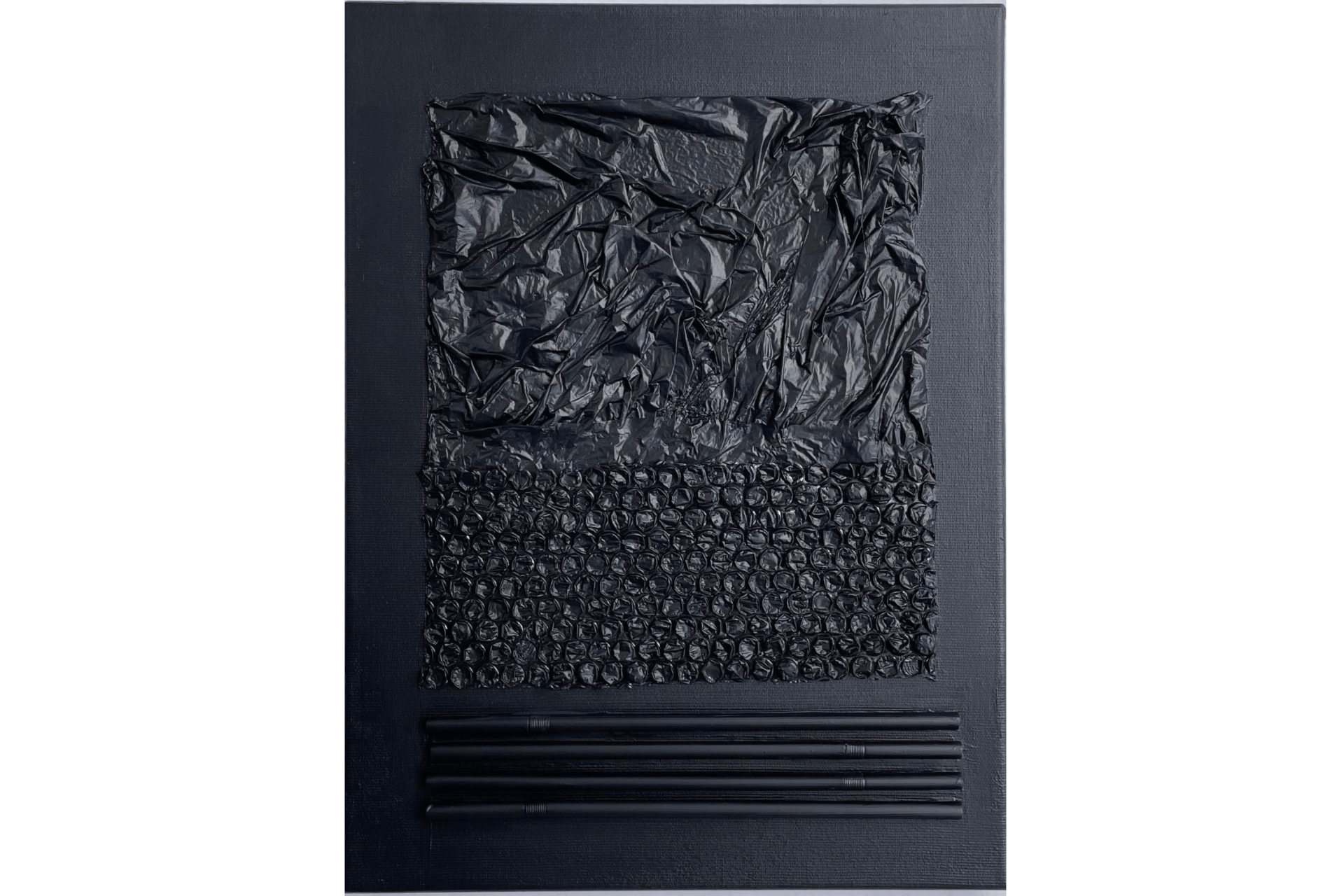
Using used trash bags, straws and bubble wrap, “Land Full” makes art of materials that would otherwise be thrown in the trash. Mishael chose a minimalist style to juxtapose simplicity against “the excessive consumerism and waste represented by the materials.” Photo and art by Rachel Mishael
What inspired you to take the art and artistic methods you are using and create an educational tool on social media? Why is spreading the information and tutorials around eco-art important to you?
I genuinely just want to spread awareness about eco-friendly and non-toxic art. I hope to encourage more artists to consider the source and impact of their materials, from both an environmental and health standpoint, and to choose safer alternatives where available.
In an ideal world, this responsibility would be on regulators rather than the individual. Unfortunately, global regulation of art and building materials today simply aren’t good enough. But, I do believe that consumer demand has the power to quickly change industry, and, thus, artists can make choices that demand safer and more eco-friendly materials from conventional brands.
Social media is powerful in the sense that content distributed on the internet can reach wide audiences. Is accessibility important to you within your advocacy?
Yes, absolutely! I am so fortunate to have a global community, and my social media strategy includes efforts to be equally accessible across income, regional, language and visual barriers. I am extremely responsive via Instagram DM and email, and will translate and respond to messages I receive in other languages.
It’s also very important to me that my tutorials and informational videos are easy for beginner and self-taught artists to understand. As a self-taught artist myself, I know how intimidating it can feel to hear technical language or things you’d likely only know about from art school. You don’t need to have any formal training, education or experience to understand my videos. You can just be someone who likes to paint sometimes.
Throughout all of your work, you appear driven by the urge to create. Where did this come from?
I can’t really say where it came from, I’ve just always enjoyed making things. I’m my most focused when I create, and it’s the closest I’ve ever come to meditation. I’ve struggled with anxiety all my life and I think creating is just the best way I know how to slow down racing thoughts and live in the present.
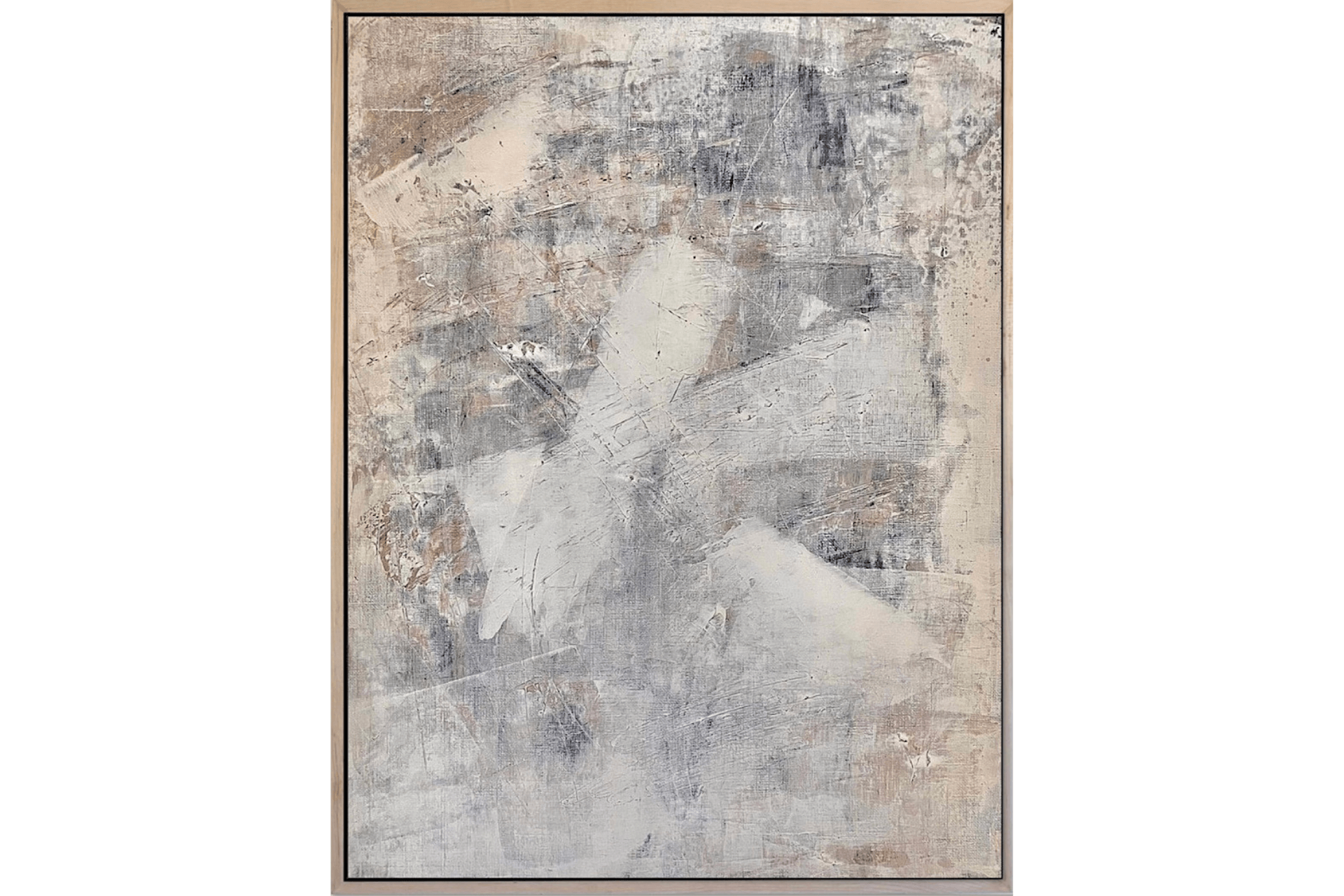
A piece from the Transitions collective, “Bare Bones” uses manufactured acrylic paint that Mishael bought before she made the transition to non-toxic supplies applied to recycled canvas paper. Photo and art by Rachel Mishael
What was your intention behind transitions: a zero-waste collective?
After learning how to make my own natural, non-toxic and lightfast paints in 2021, I decided to dedicate the future of my practice to earth-friendly materials. But first I wanted to find the best use for my existing materials. This collective was born out of an eco-minded, zero-waste approach to transition away from conventional materials to a sustainable studio. Each work in this collective makes use of materials that would otherwise go to landfills.
How do you see the role of artists within the climate movement?
I think artists have a unique position to influence cultural change. Art has historically been used to communicate important social and political messages, and contemporary art in particular often communicates these messages most directly, which can help ideas and perspectives gain mainstream attention and acceptance.
All that’s to say, I think artists can inspire more climate-action through their work. Though, I should note that, in a broad sense, I feel governments and big corporations should be the ones to take responsibility in effectively addressing our climate crisis. But for the most part, they are failing us and we cannot rely on them.
I am criticizing and challenging regulators and businesses. And I am sending the message that we as consumers have the power to influence positive change.
How do you incorporate concepts into your art like capitalism and social equity? Is there a new concept or ethical concern that you see yourself gravitating towards more recently?
My personal values always inform my work, intentionally or otherwise. I think that’s true for all artists, because our art is an extension of ourselves. Our worldview and unique perspective is always reflected in our work.
Having traveled quite a bit of the Western world and having lived in places like Denmark and the U.K., I have seen there is a wide spectrum of capitalist models. Here in the U.S., we have taken an extreme end of that spectrum, which has lead to or allows for poor regulation, profits over people and social injustice.
By making my own art materials from nature or supporting brands that prove they genuinely care about consumers and the environment, I am making a statement about these issues. I am criticizing and challenging regulators and businesses. And I am sending the message that we as consumers have the power to influence positive change.
Lately my work has gone deeper into exploring consumerism. I’m excited to see where this takes me.
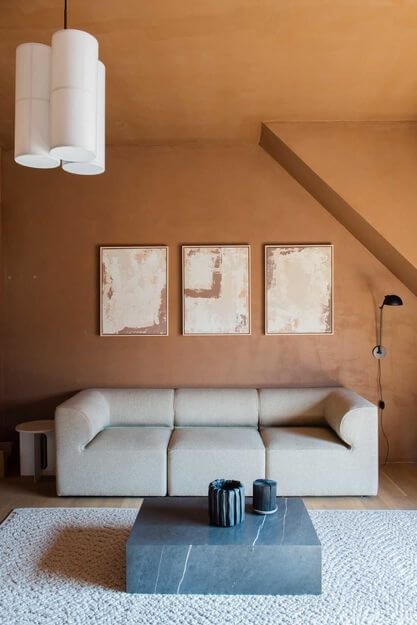
A collection of three natural art pieces displayed at The Audo. Photo by Vaernis Studio
Are Indigenous uses of natural resources a source of inspiration for you?
Absolutely! The natural paint-making techniques I use come from a variety of ancient practices from around the world, some relatively universal and others more unique to particular regions and groups. I always find it inspiring when I learn about Indigenous groups and individuals today who have preserved their own ancestral art and paint-making traditions.
More generally, I have such a deep respect for Indigenous groups who remain so connected to their natural environment, and I think we can learn so much about sustainability and harmony from them.
In your advocacy and educational work, have you noticed an increased interest in the eco-art revolution?
Definitely! And, I think it corresponds with a general increased interest in all eco-friendly efforts. From what I see on my end, a majority of the interest comes from young Millennials and Gen-Z, but I’m always so happy to see when older generations also take an interest.
Your artwork has undergone an evolution. How much of that evolution has been influenced by the state of the environment?
From the beginning, my work has always had a textural focus, and that’s still the case. But as my materials became more considered, nature was organically reflected in the surface expression. Now I can point to a painting and say, “That stroke comes from rocks I sourced on the Danish coastline, and that one comes from the Greek island of Milos.”
The work is connected to the environment in the purest sense, which I hope sends a message that we can reconnect with ancient sustainable practices in a contemporary way.
Help us sustain independent journalism...
Our team is working hard every day to bring you compelling, carefully-crafted pieces that shed light on the pressing issues of our time. We rely on caring supporters like you to help us sustain our mission. Your support ensures that we can continue to provide deeply-reported, independent, ad-free journalism without fear, favor or pandering. Support us today and make a lasting investment in the future.

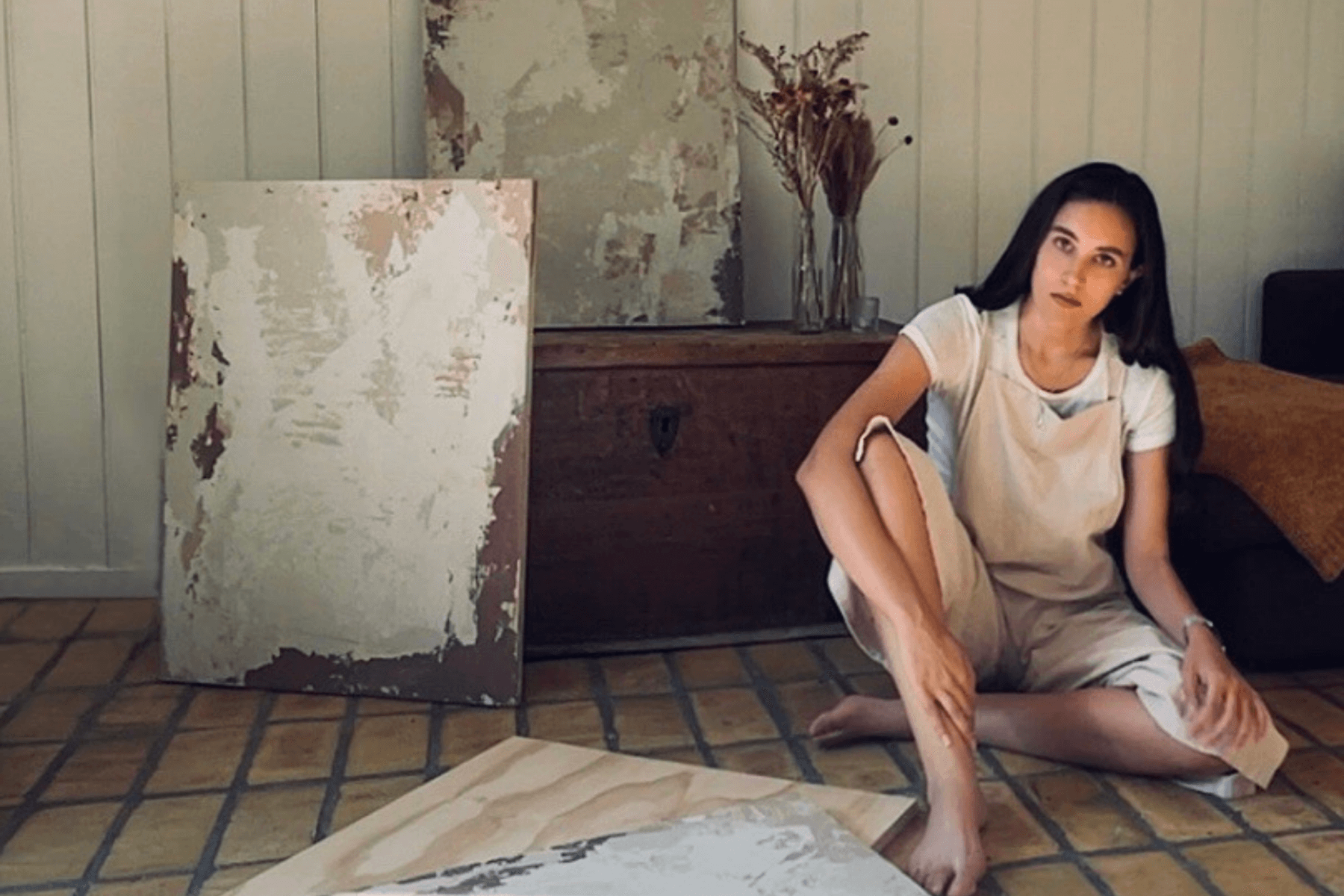
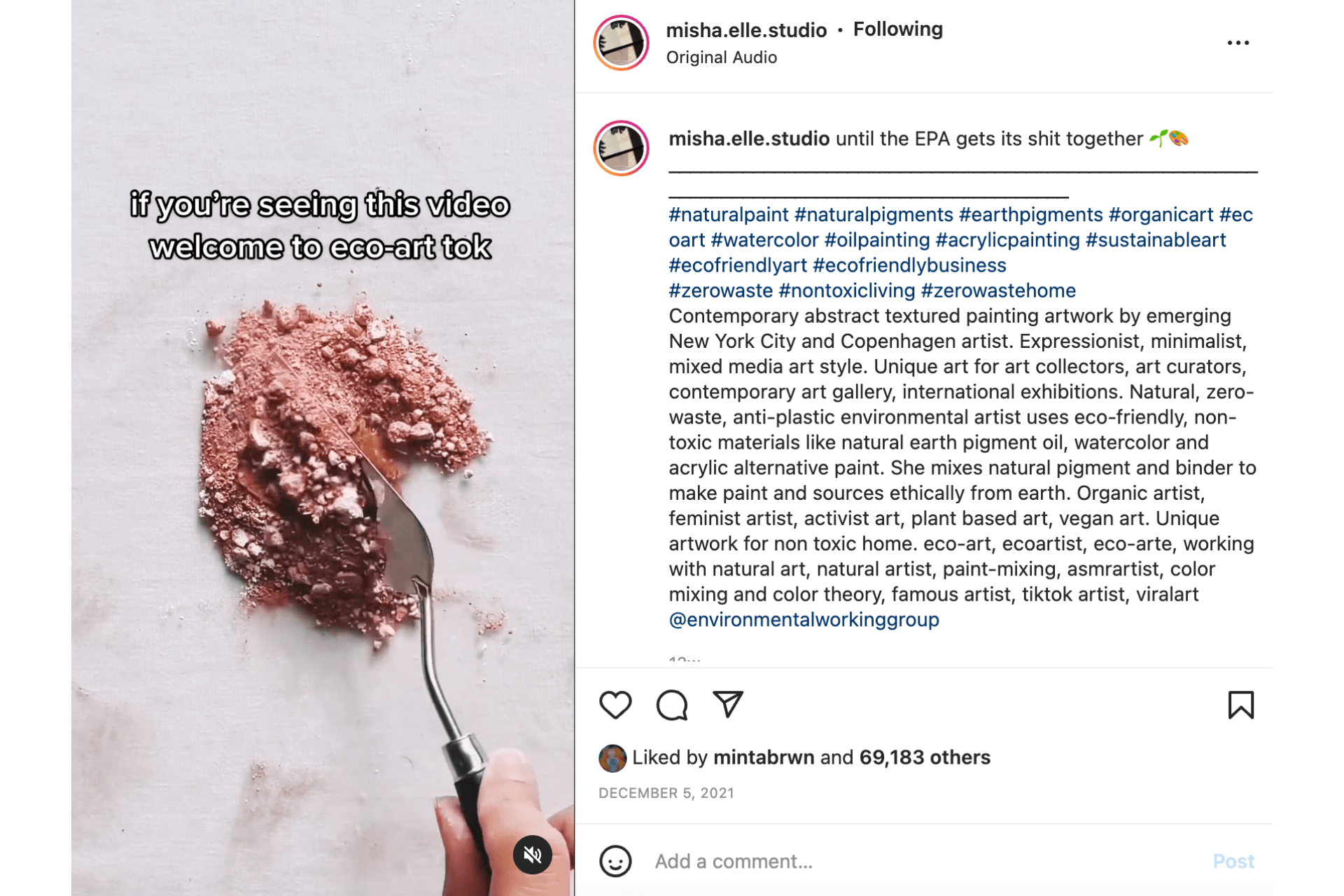
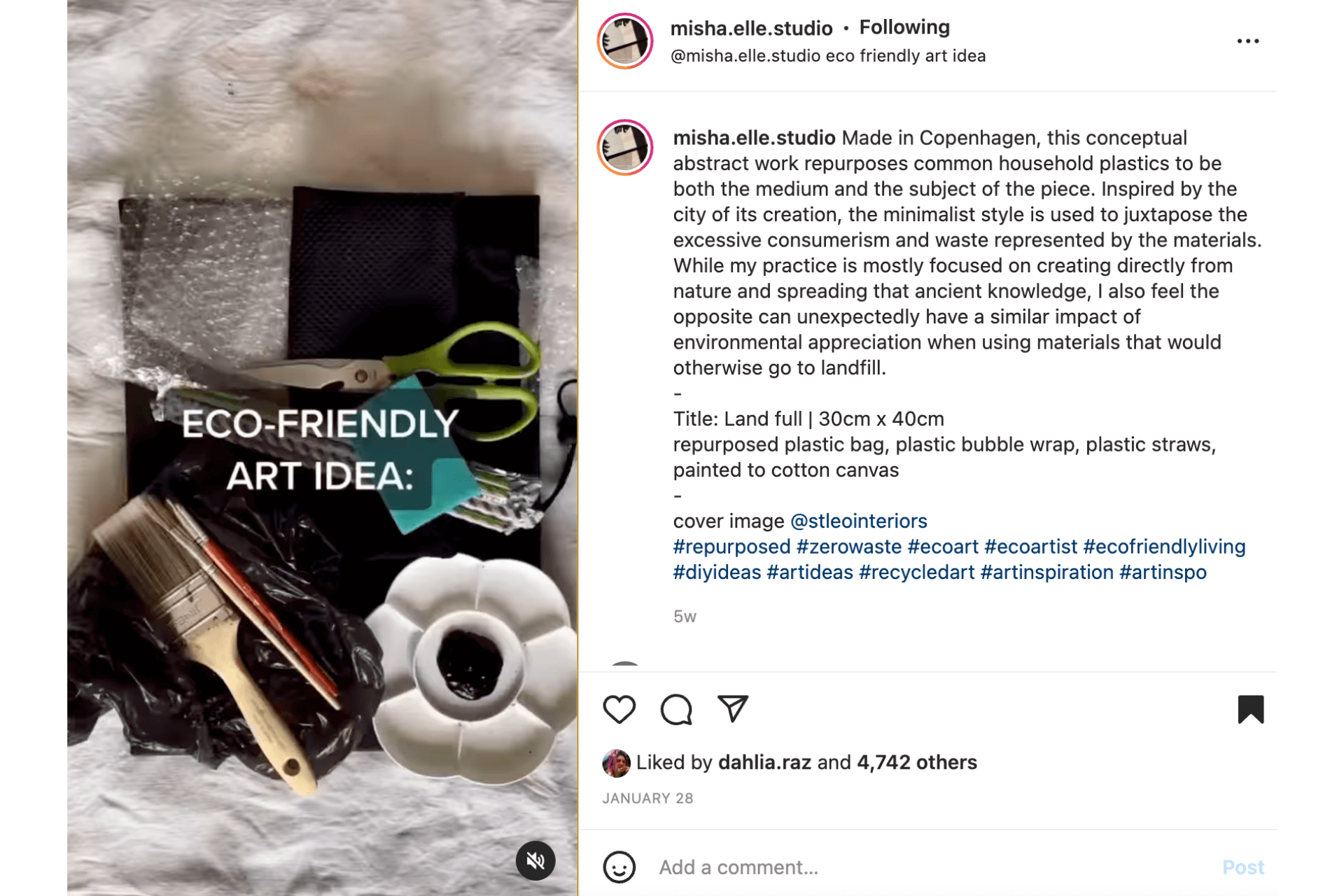
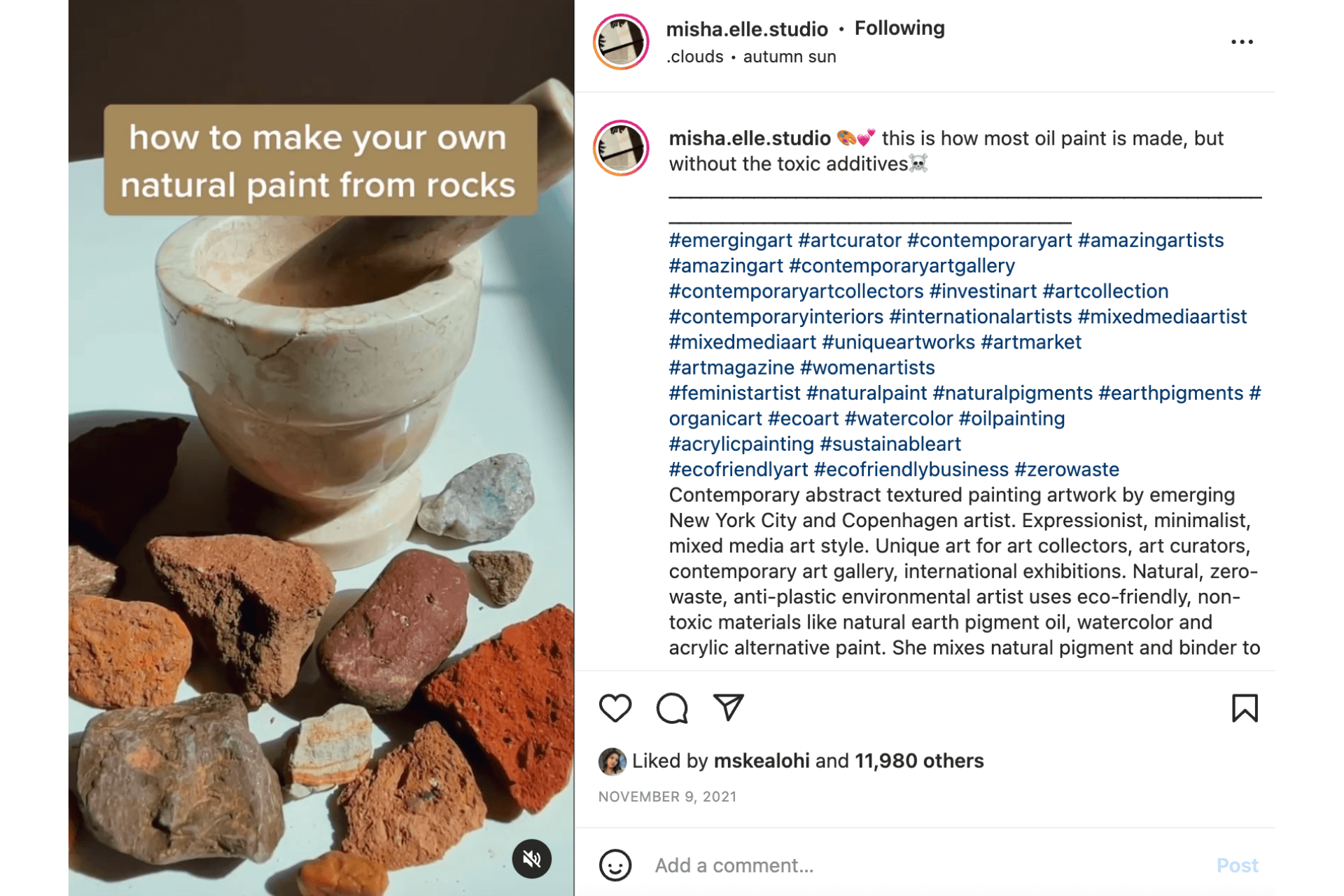
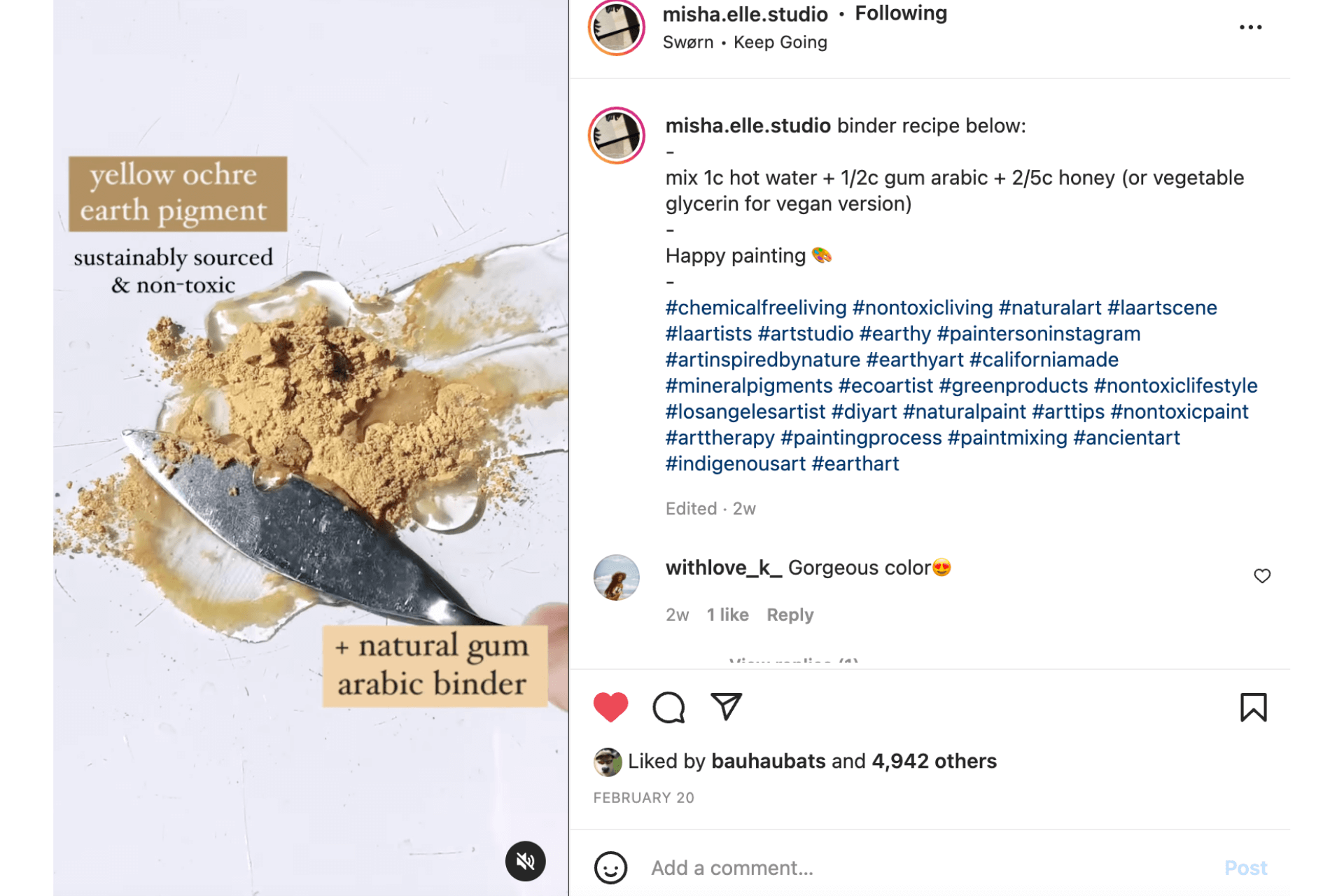
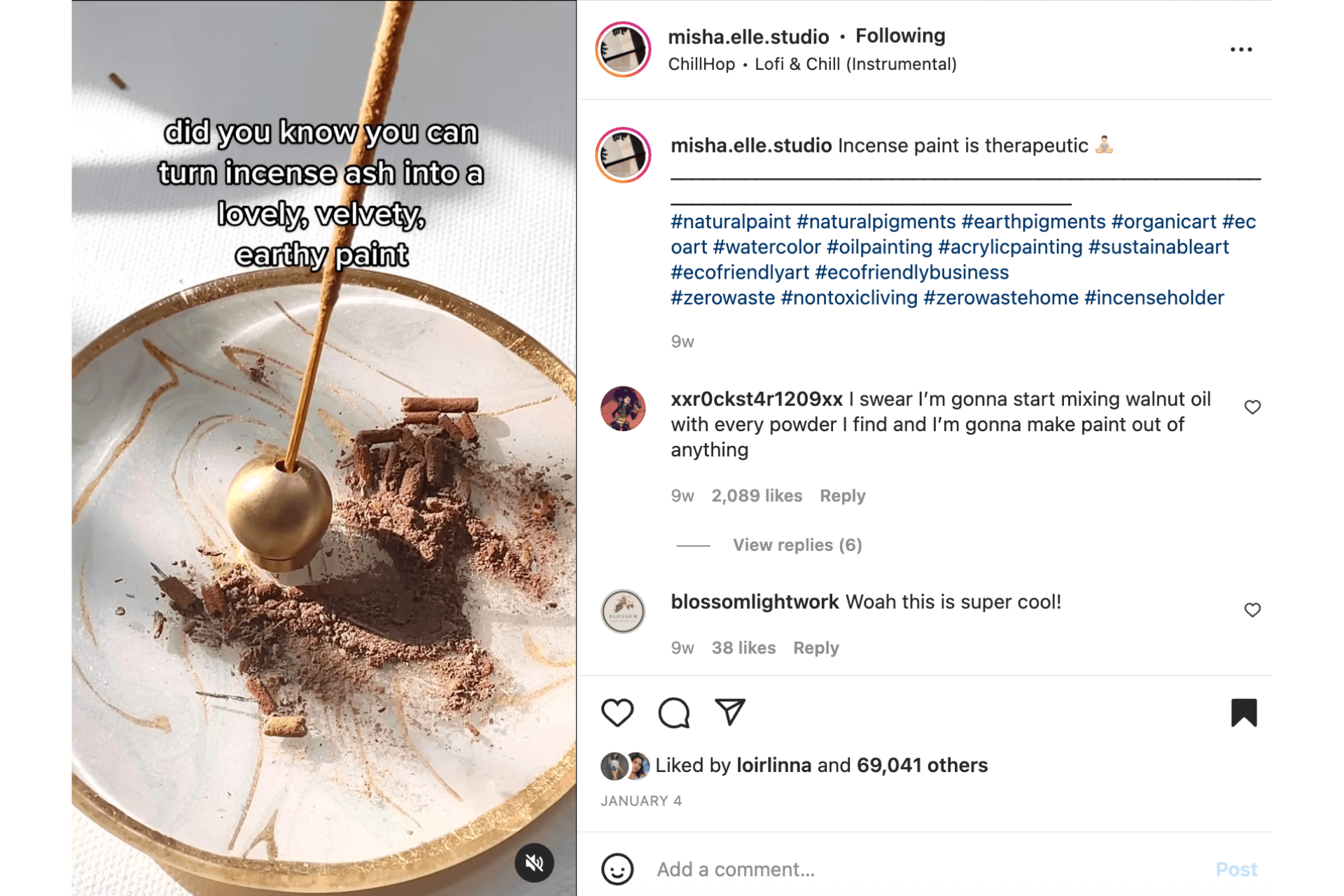

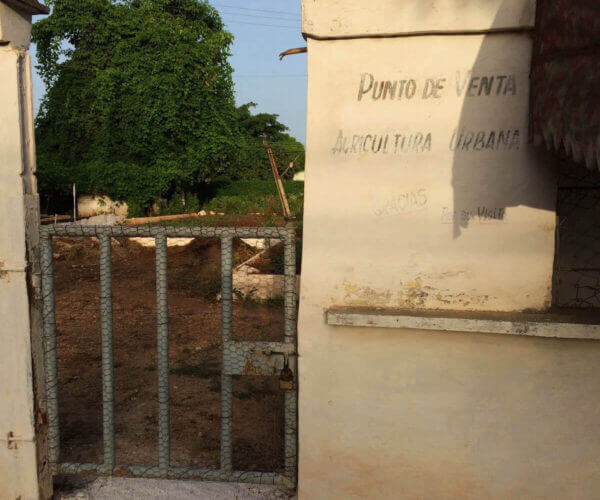









Modern chemicals were invented for a reason; natural pigments do not have longevity.